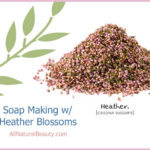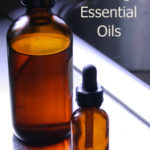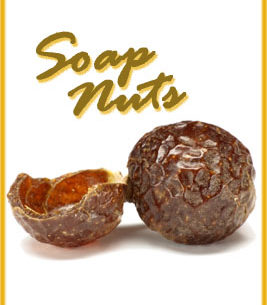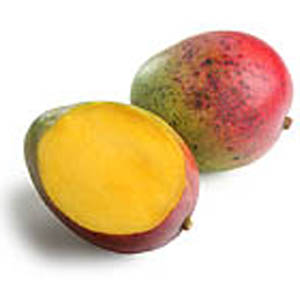
Dry skin and hair need gentle, non-stripping ingredients. Look for ingredients and products that are emollient (softening), hydrating (add moisture), and that seal in moisture and replace the body’s natural sebum.
Dry Skin:
A very basic dry skin routine is: cleanse, tone, and seal in moisture or moisturize. Use this routine twice a day. At least once a week, you’ll also want to use a mask and exfoliate. Many people with dry skin like to use water based products to hydrate their skin.
Cleansers:
I recommend using a gentle non-drying cleanser. There are a variety of cleansers suitable for dry skin. Everyone’s skin is different, so what might work for you, may not work for someone else. So I have suggested a variety of ingredients and types of products you may want to try.
Many food staples can be used in cosmetics. For a good, simple homemade DIY (Do It Yourself) cleanser try oatmeal, honey, or yogurt. You can use each of these ingredients by themselves or mixed together. All of these ingredients make wonderful masks too.
Many people like using oils to cleanse; you may have heard of oil cleansing method or cleansing oils. In my experience, some people are able to use cleansing oils daily, but many people prefer using them only one to a few times a week (use other cleansers when not using a cleansing oil). Start by using them once a week and increase or decrease usage as needed. You can use nearly every carrier oil to cleanse the skin. Many people like to use olive oil, sunflower oil, or castor oil (if using castor oil, mix it with another carrier oil), since they are inexpensive and have nice glides and textures. Please note cleansing oils can cause initial, temporary purging of the skin in many people.
Some people with dry skin prefer to use real soaps. If you use soap be sure to use a super fatted soap (a soap with additional oils and butters in it) made with many other emollient ingredients, like honey or marshmallow root. Make sure the soap company has not removed the glycerin from the soap (most small Indie companies don’t remove the glycerin but some larger companies do). Many people with dry skin can use real soap if it is emollient and conditioning enough for them, while some people find them a touch drying. (Real soaps are made with carrier oils, butters, or other fats, and an alkali. Many of the soaps on the market are not real soap but are really synthetic detergents, so read labels carefully).
The majority of people are used to using a detergent based cleanser (all detergents are synthetic, even the naturally derived ones). If your skin prefers a detergent based cleanser, try one made with a gentle detergent (like decyl polyglucose), and that contains carrier oils, butters, or other emollient or conditioning ingredients. Many people with dry skin can use detergent based cleansers if the detergent is gentle, and if it contains enough emollients and conditioning ingredients, but other people (including me) find using detergent based cleansers on a regular basis to be too drying.
Masks:
Once or twice a week use a hydrating and moisturizing mask. Use a mask after cleansing, and before toning. Many common fruits and kitchen ingredients can be used to make masks for the skin.
Exfoliate:
One to three times a week, exfoliate your skin. Exfoliants can be found in all the different steps of a skin care routine, or it can be its own product. For example, your cleanser, toner, mask, or moisturize can sometimes contain exfoliants. Or you can make a separate product whose main purpose is to exfoliate, such as an exfoliating serum or a scrub. Yogurt is a nice exfoliant (it is a natural source of lactic acid). Oatmeal can be an exfoliant too, depending on how it is prepared (see my oatmeal recipe for details).
Toners:
After cleansing (and after using a mask or scrub), use a good toner. Toners not only help rebalance the pH of the skin, but they provide the skin with adequate hydration. Many ingredients have other properties too (including rebalancing sebum levels in the skin, some ingredients are anti-inflammatory, other ingredients are good for blemished skin, etc).
Extra Hydration:
Using an additional hydrator or water based product is optional, and is only needed if your skin needs extra moisture. For many people, a toner provides enough hydration, but for others, they need to use another water rich product in addition to the toner. Use this step after toning and before sealing in moisture or using a moisturizer. Look for products that contain hydrating ingredients (like aloe and hydrosols) or humectants (such as glycerin or hyaluronic acid). If you are vegetarian be sure to get vegan hyaluronic acid.
Seal In Moisture Or Moisturize:
You can accomplish this last step in a few ways. Use a few drops of a carrier oil or a very small amount of a butter. Oils and butters help seal in moisture and replace the skin’s natural sebum. Apply to damp skin (dampen skin with toner or another hydrator). The combination of oils and butters plus the water from the toner or hydrators will moisturize the skin. A few carrier oils that are great for dry skin are camellia, meadowfoam oil, almond, or olive oil.
Most people prefer or are familiar with using a moisturizer, such as a cream or lotion. Natural brand creams and lotions are made with emollient carrier oils and butters, and water rich ingredients. Many brands of natural moisturizers tend to be very concentrated so you only need to use a little for great results! Try some made with the suggested oils and hydrating ingredients listed above.
Dry Hair:
For dry hair, you need treatments that will clean without over stripping, and that deeply condition. Different ingredients work for different people, so experiment and find out what works for you!
Shampoos And Other Ingredients To Clean The Hair:
If you use a natural brand detergent based shampoo, try to get one with a lot of emollients and conditioning ingredients in it, such as carrier oils, coconut milk, honey, or marshmallow root. Many essential oils are great for dry hair, including carrot seed oil and ylang ylang. The majority of people like using detergent based shampoos since a properly made formula cleans without over drying. However, a few people (such as me) find them a tad drying when used on a regular basis. I recommend using a shampoo made with a gentler, non-toxic, benign detergent, such as decyl polyglucose.
Many people like using real soap as shampoo. If you use soap, be sure to get one that is super fatted, that still contains its glycerin, and that is crafted with other emollient or conditioning ingredients (since some soaps may be too drying for some people). Try a variety of different soaps, since every soap maker makes soap a little different, and you may have to try a few until you find one your hair likes. For example, I love using African Black Soaps and soaps high in castor oil for my hair, but other people may prefer soaps made with other ingredients. After you shampoo with soap, follow it with an acidic rinse (to rebalance the pH of the hair) like vinegar toner or herbal infusions.
Many people with dry hair prefer the ‘no-poo’ method. Instead of detergent based shampoo, soap, or another cleanser, they use (store bought) conditioner to wash the hair. For most people, a good conditioner will rinse cleanly, will remove dirt, and will not leave the hair greasy. The no-poo method leaves very dry hair soft and manageable. Many people like to use conditioner to wash their hair at least a few times a week. While others can only use the no-poo method occasionally, and some people can’t use it at all. You can use any brand of natural based conditioner you like.
You may like using herbs or other natural ingredients to cleanse the hair. Soap nuts make an excellent hair shampoo. Best of all, soap nuts can be used as a skin cleanser and laundry cleaner too! Soap nuts contain natural saponins that gently clean the hair and skin.
Conditioners:
For dry hair use a good conditioner regularly. Most people like using already made made/store bought conditioners, which hydrate and moisturize the hair. Other people like to use hair rinses, many of which lightly condition. Some people like using DIY deep conditioning treatments once or twice a week.
For store bought conditioners try to use a conditioner made with humectants or hydrating ingredients, such as glycerin, aloe, or algae extract. For dry hair, I suggest buying a conditioner that is made with a large proportion of carrier oils or butters (make sure they are listed high on the ingredient list).
Vinegar rinse is a nice hair conditioner (as well as a skin toner).
Many herbal infusions can be used as a hair rinse. Several different herbs are excellent for dry hair (and all other hair types too), including roses, lavender, and chamomile. See my rose cosmetic link for directions on how to make rose infusion.
Making a deep conditioning hair treatment is easy! Many food based ingredients can be used to deeply condition the hair. Some of my favorite ingredients include coconut milk, honey, mayo, and carrier oils.













